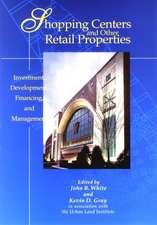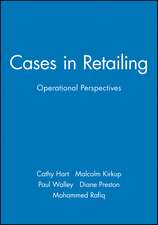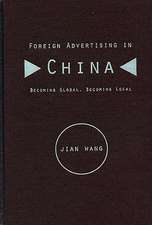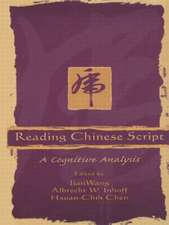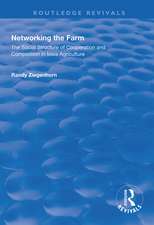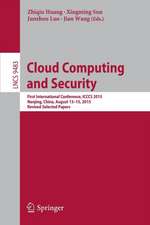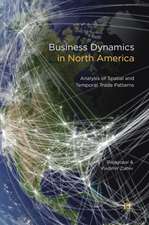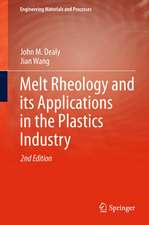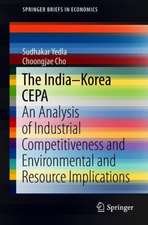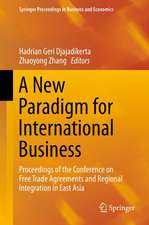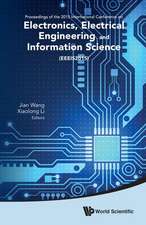Economic Analysis of Industrial Agglomeration
Autor Jian Wangen Limba Engleză Hardback – 15 ian 2018
| Toate formatele și edițiile | Preț | Express |
|---|---|---|
| Paperback (1) | 377.57 lei 6-8 săpt. | |
| Springer Nature Singapore – 23 dec 2018 | 377.57 lei 6-8 săpt. | |
| Hardback (1) | 384.70 lei 6-8 săpt. | |
| Springer Nature Singapore – 15 ian 2018 | 384.70 lei 6-8 săpt. |
Preț: 384.70 lei
Nou
Puncte Express: 577
Preț estimativ în valută:
73.61€ • 76.71$ • 60.95£
73.61€ • 76.71$ • 60.95£
Carte tipărită la comandă
Livrare economică 03-17 aprilie
Preluare comenzi: 021 569.72.76
Specificații
ISBN-13: 9789811074363
ISBN-10: 9811074364
Pagini: 125
Ilustrații: XIII, 96 p. 28 illus.
Dimensiuni: 155 x 235 mm
Greutate: 0.34 kg
Ediția:1st ed. 2018
Editura: Springer Nature Singapore
Colecția Springer
Locul publicării:Singapore, Singapore
ISBN-10: 9811074364
Pagini: 125
Ilustrații: XIII, 96 p. 28 illus.
Dimensiuni: 155 x 235 mm
Greutate: 0.34 kg
Ediția:1st ed. 2018
Editura: Springer Nature Singapore
Colecția Springer
Locul publicării:Singapore, Singapore
Cuprins
1 Introduction.- 2 Review of New Economic Geography.- 3 Industrial Agglomeration: A Simulation Model.- 4 Industrial Dispersion: An Analytical Model.- 5 Home Market Effect: New Evidence from China.- 6 Conclusions.
Notă biografică
Jian Wang is currently assistant professor at the SHU-UTS SILC Business School, Shanghai University. He received his doctorate from Ritsumeikan University, Japan. Dr. Wang’s main research areas of interest are international trade, economic geography, urban economics and environmental economics. His academic papers have been published in Energy Policy, The Annals of Regional Science, Review of Urban and Regional Developments Studies.
Wang, J., Lv, K., Bian, Y and Cheng, Y. 2017. Energy efficiency and marginal carbon dioxide emission abatement cost in urban China. Energy Policy. Vol.105. pp. 246–255.
Wang, J and Xu, J. 2015. Home market effect, spatial wages disparity: an empirical reinvestigation of China. The Annals of Regional Science, Vol. 55 No.2.pp.313–333.
Wang, J and Zheng, X. 2013. Industrial agglomeration: Asymmetry of regions and trade costs. Review of Urban and Regional Developments Studies, Vol.25 No.2. pp. 61-78.
Wang, J and Zheng, X. 2013. “Agglomeration and dispersion of the gate region and hinterland”, Ritsumeikan Economic Review, Vol. 62 No.1.pp.39-60.
Textul de pe ultima copertă
This book investigates the industrial agglomeration and dispersion within a country under trade liberalization and interregional integration by considering both economic forces and geographical elements. Chapter 1 gives a brief introduction about the background, research topics and organizations in this book. Chapter 2 provides a detailed explanation of Krugman’s new economic geography (NEG) model and reviews the subsequent refinements of the original model from mainly geographical viewpoints. Chapter 3 extends Krugman’s original model to a two-country and three-region case where the domestic regions are fully asymmetrical in terms of their sizes and accessibilities to global markets. To better explain the reality of developing countries, chapter 4 presents an analytical model which assumes that unskilled workers are employed in both traditional and manufacturing sectors. Chapter 5 empirically investigates the home market effect (HME) in terms of wages in the case of China by using panel data for the period 1980–2012. Chapter 6 gives a summary and implication about the findings and conclusions in this book.
Caracteristici
This book is the first attempt to investigate the impact of international trade liberalization and regional integration on the distribution of industrial activities within China, which offers an ideal setting to investigate this issue This book gives the rational of the success of coastal regions in China relative to other regions is accounted for by the interaction of geographical advantage (first nature) and self-reinforcing economic forces (second nature) It is conceivable that HME (home market effect) influences the spatial disparity across regions within a country. This book attempts to interpret a definition of HME and claims that HME contains two critical components i.e. PME (primary magnification effect) and SME (secondary magnification effect). It reinvestigates HME in terms of wages and study the evolution of spatial disparity during regional integration using panel data of China Includes supplementary material: sn.pub/extras


